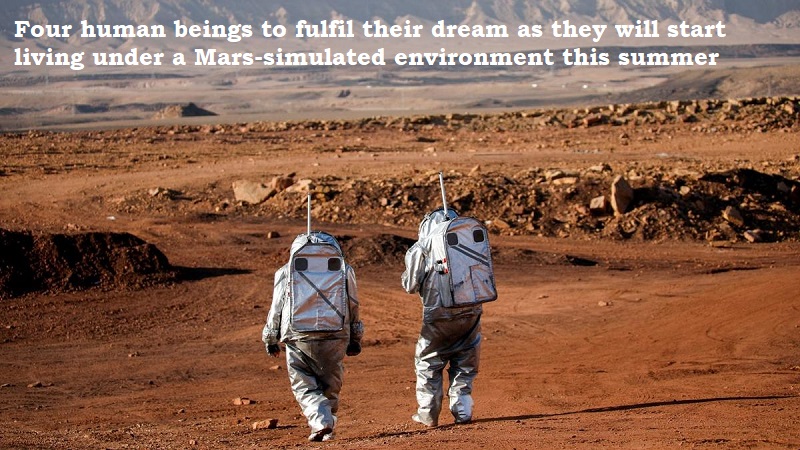
This summer, four individuals will live in a habitat that simulates the environment on Mars, furthering the work of scientists and engineers to make it possible for humans to live on the planet. These volunteers have been part of a year-long mission that aims to prepare humans for Mars exploration. The habitat will replicate the climatic conditions the volunteers will encounter on Mars, complete with a 3D-printed kitchen, private quarters, exercise areas, medical facilities, workspaces, and two bathrooms.
Starting in June, the crew will live in their Martian home as they collect the most accurate data possible during the analogue mission. During this time, the volunteers will perform various simulated mission activities, such as spacewalks, robotic operations, habitat maintenance, exercise, crop growth, and personal hygiene. By doing so, they will face environmental stressors such as isolation, resource limitations, equipment failure, and a significant workload, gaining experience for what they may encounter on Mars.
The volunteers will also remotely operate robotic elements, preparing them for their real-life roles in extending exploration capabilities during a Mars expedition. They will have control over a roving robot and a drone similar to a helicopter. NASA plans to conduct three analogue missions to better understand what it takes to inhabit Mars. The second mission will take place in 2025, followed by a third in 2026.
According to Raina MacLeod, CHAPEA deputy project manager, the analogue mission aims to observe how crew performance and health change under realistic Mars restrictions and the lifestyle of crew members. The goal is to simulate a realistic environment and workload for the CHAPEA crew, enabling them to experience conditions similar to those they will face on Mars.

Post Your Comments